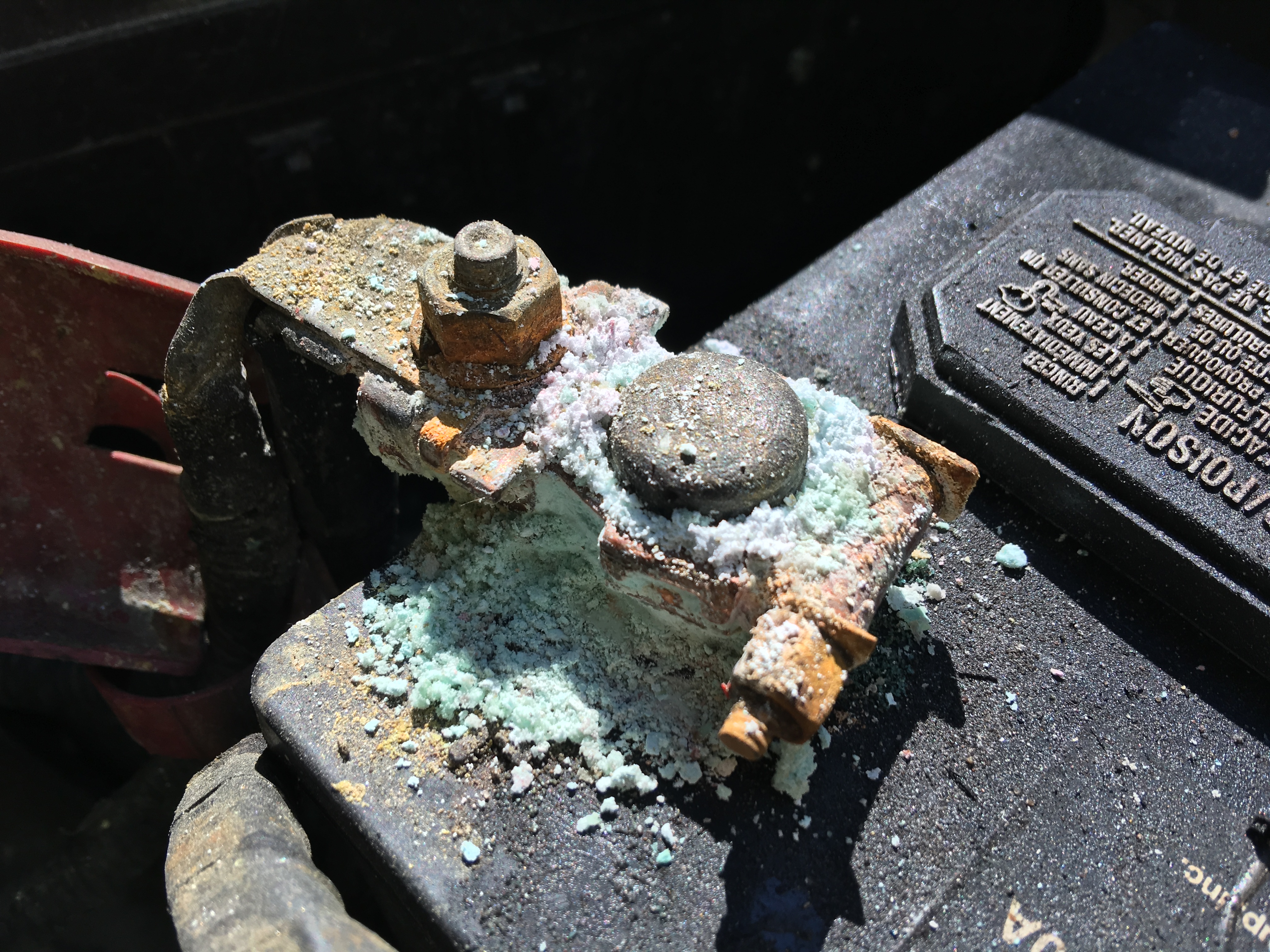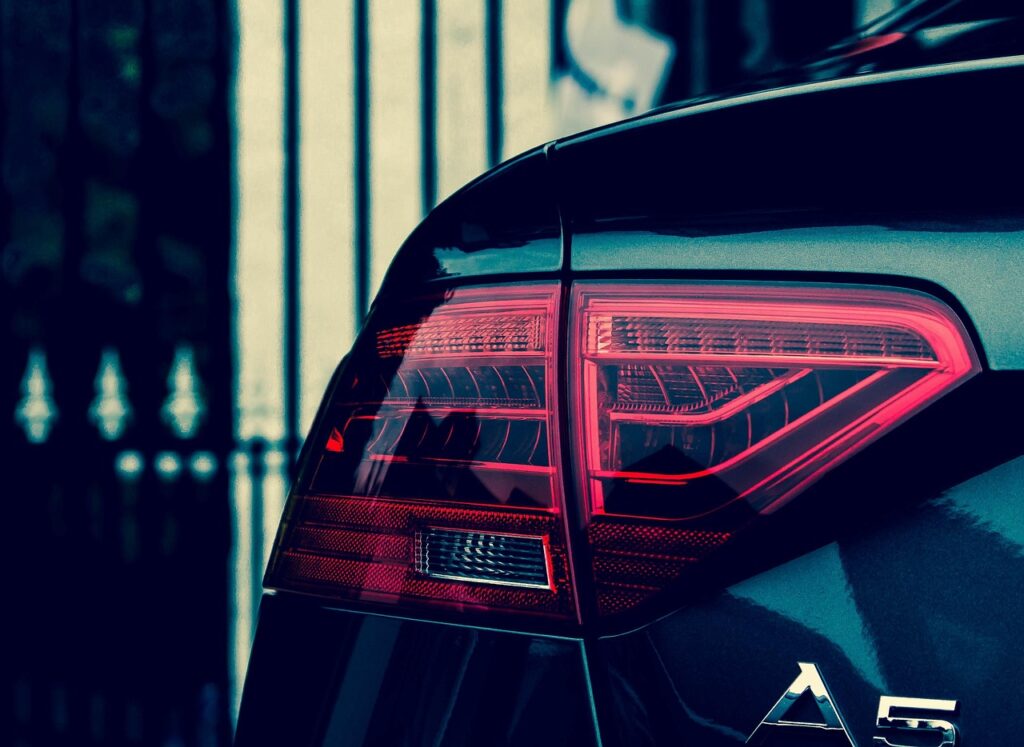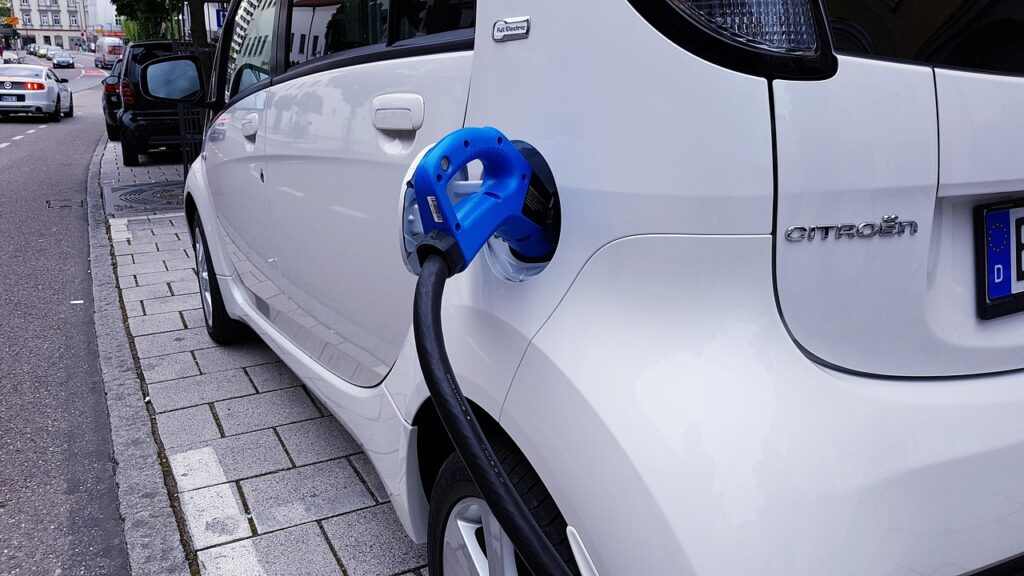
Few things are as frustrating as trying to start your car but realizing the battery is dead. That sudden silence when you turn the key, or the sputtering struggle of a weakening engine, can be more than just an inconvenience; it can leave you stranded, disrupt your plans, and require immediate assistance from a loved one, roadside service, or even a stranger for a jumpstart. Understanding the underlying reasons for a battery’s failure is not just about troubleshooting; it’s about regaining control over your vehicle’s reliability.
Investigating the cause of battery issues is essential for any car owner. Once the problem is identified, you can take concrete steps to resolve it and prevent future occurrences, ensuring your vehicle remains a dependable mode of transportation. This article, informed by insights from automotive repair specialists, delves into every potential cause of your battery woes, offering clear explanations and actionable advice to empower you.
There can be many reasons why a car battery dies quickly, ranging from simple oversight to more complex component failures. Some causes are entirely within your control, while others are simply a fact of automotive life. Our aim is to provide thorough, evidence-based information, presented in clear, accessible language, enabling you to make informed decisions about your car’s maintenance and get back on the road with confidence. We’ll cover the most common issues, offering practical recommendations for diagnosis and prevention.
1. **Accidental Discharge**
Leaving lights on by accident is one of the most common and easily preventable reasons a car battery will repeatedly fail. Whether it’s a dome light, a brake light, or a headlight inadvertently left illuminated for more than a few minutes, the continuous draw of power will almost certainly drain your battery completely. This scenario often catches drivers off guard, turning a simple parking maneuver into an unexpected headache.
Many modern cars are equipped with intelligent systems designed to prevent this very problem, automatically turning off all lights when the vehicle is locked with the key fob or after a set period. However, these systems are not foolproof, and older vehicles often lack such features. It is crucial for every driver to be mindful of their vehicle’s electrical accessories before exiting, as even a seemingly minor oversight can lead to a completely dead battery.
If you find this happening often, there’s likely some switch or setting you need to change in your vehicle. Consulting your owner’s manual can provide valuable information on configuring your vehicle’s lights correctly, ensuring they are not inadvertently left on. Should you encounter an accidentally discharged vehicle, a jumpstart will typically be needed to get it running again, allowing the alternator to recharge the battery as you drive.
Beyond lights, other accessories can also contribute to accidental discharge. Leaving the blower motor running or the AC turned to the ON position when the engine isn’t running will similarly drain the battery. These components draw significant power, and while a brief oversight might not be catastrophic, prolonged engagement without the engine running is a guaranteed path to a dead battery. Always double-check all interior and exterior electrical consumers before leaving your vehicle.
Read more about: Your Essential Guide to Electricity: From Fundamentals to Electric Scooter Safety Laws

2. **Old Battery / Age-Related Wear and Tear**
Car batteries, despite their critical role, are not designed to last indefinitely. You typically need a new battery every 3-4 years, as their durability is often overestimated by many drivers. If your battery is more than four years old and repeatedly dies for seemingly no discernible reason, it is highly probable that it has simply reached the end of its useful life and requires replacement.
Over time, all batteries undergo a natural process of degradation, losing their capacity to accept and store energy. This phenomenon, known as capacity fade, gradually reduces the battery’s efficiency until it can no longer hold enough stored power to reliably start your vehicle. This degradation is an inevitable consequence of normal usage, marked by internal changes like plate shedding, where lead material flakes off the positive plate due to expansion and contraction during charge and discharge cycles, forming sediment at the bottom of the battery case.
The demands placed on car electrical systems have significantly increased over the past few decades. Modern vehicles are laden with sophisticated electronics, including heated seats, heated mirrors, daytime running lights, power seats, multiple computers, and high-powered stereos—all drawing power from the battery. Unlike older cars that only needed to power basic lights and a blower motor, today’s batteries and alternators are under much greater strain, contributing to their relatively shorter lifespan of 3-4 years.
Once capacity fade falls to around 40% or less, your car battery can die quickly. This effect is even more pronounced in colder weather, where chemical activity within the battery slows down, further reducing its starting power. Therefore, delaying the replacement of an old battery is akin to rolling the dice; getting stranded becomes a question of “when” rather than “if.” When the time comes, purchase a battery identical to your old one in both power and size, then follow proper procedures to disconnect the old terminals and brackets before installing the new battery.
Read more about: Beyond 100,000 Miles: A Consumer Reports Guide to Smart Used Car Purchases

3. **Corroded Battery Connections**
Corrosion on battery terminals is a prevalent issue that can significantly impede your battery’s performance, even if the battery itself is relatively new. This corrosive buildup, often appearing as a white, green, or blue gunk, forms when battery acid is exposed to the air on the terminals—the metal bumps where you connect the battery cables. This chemical reaction creates a barrier that interferes with the flow of electricity, preventing the battery from fully charging or efficiently discharging its power.
The presence of corrosion indicates an underlying problem that is making it hard for your battery to perform optimally. When electricity encounters this high resistance at the terminals, it generates heat. This increased heat is detrimental to the battery’s internal components and can accelerate its degradation, directly contributing to premature failure. Furthermore, if your car’s voltage regulator detects high resistance, it may increase the charging voltage, inadvertently creating even more damaging heat within the battery.
Addressing corrosion is a practical maintenance task that can extend your battery’s effective life. You can clean the corrosion off by mixing one part baking soda with one part water and pouring this solution onto the terminals. The baking soda neutralizes the acid. Subsequently, use a toothbrush or a wire brush to thoroughly scrub the buildup off, ensuring the metal surfaces are clean and conductive. It is important to remember that while cleaning corrosion can provide a temporary fix, its persistent recurrence often signals that you might need a new battery within the next year or so.
To prevent battery corrosion from forming in the first place, apply battery-terminal grease to the terminals approximately once every year. This protective layer acts as a barrier, shielding the metal from acid exposure and environmental factors that lead to corrosion. Regular inspection and cleaning of your battery terminals and cables are among the best ways to ensure maximum life from your battery, maintaining optimal electrical conductivity and preventing unnecessary strain on the charging system.
Read more about: Buyer Beware: 15 Vintage Coupes That Rarely Make It Past 120,000 Miles Without Major Overhauls
4. **Loose Battery Connections and Cables**
Just as corrosion can hinder electrical flow, loose battery connections can equally compromise your battery’s ability to function correctly. If the terminal leads—the cables that connect to the battery posts—are not fastened securely, the battery will not be able to accept a full charge from the alternator, nor will it be able to deliver its stored power efficiently to start the vehicle. This often manifests as unreliable starting, or even complete failure to start, particularly after a jumpstart when electrical systems might behave erratically or “twitchy.”
The issue of loose connections extends beyond just the main battery terminals. A poor ground connection can also negatively influence the battery’s capacity to charge and cause unwanted power fluctuations throughout the vehicle’s electrical system. The ground connection is a crucial wire that connects the vehicle’s electronics to the negative battery terminal, completing the electrical circuit. If this connection becomes dirty, broken, or corroded, it can lead to a range of electrical problems, including a dead battery.
Furthermore, the physical condition of the battery cables themselves plays a vital role in efficient power transfer. Weak or damaged battery cables, whether due to wear and tear, internal breaks, or compromised insulation, will lessen the flow of electricity. This reduction in conductivity means less power reaches the starter motor and other essential components, ultimately diminishing the battery’s charge and overall performance. Such damage might not always be immediately visible but can severely impact the battery’s health.
To address loose connections, a simple inspection and tightening with a wrench can often resolve the problem. Confirm that both the positive and negative terminal leads are secure and firmly attached to the battery posts. For ground connections and battery cables, visually inspect them for any signs of damage, fraying, or corrosion. Any cables that are worse for wear should be replaced promptly to restore optimal electrical flow and ensure your battery charges and discharges effectively, preventing future starting issues and electrical inconsistencies.

5. **Parasitic Drains**
A parasitic drain occurs when a component or system in your vehicle continues to draw electrical power from the battery even after the engine has been turned off and the car is parked. This unintended energy consumption can slowly but steadily deplete your battery’s charge, often leaving you with a completely dead battery the next time you attempt to start your car. It’s a subtle but significant issue that can be particularly perplexing for car owners.
Common culprits for parasitic drains include malfunctioning glovebox lights, trunk lights, or radio systems that fail to power down completely. Aftermarket accessories, such as poorly wired sound systems, alarm systems, or hardwired undercarriage lighting, can also be significant sources of continuous power draw if not installed correctly. Even a faulty sensor or an infotainment system that doesn’t fully shut off can contribute to this problem, slowly siphoning energy away from your battery.
If your vehicle doesn’t start regularly, and you have already confirmed that your battery is properly connected and you haven’t accidentally left any lights or accessories on, a parasitic drain is a highly probable cause. The tricky aspect of parasitic drains is that the power draw is often minimal, making the battery depletion a gradual process over hours or days, rather than an immediate shutdown. This can make diagnosis challenging for the average car owner.
While you can attempt to find a parasitic drain on your own, it can be an extremely difficult and time-consuming process. The offending component is often some kind of obscure fuse or an intricate part of the electrical system that requires specialized knowledge and tools to trace. For this reason, you are typically better off taking your vehicle to a qualified mechanic who has the diagnostic equipment and expertise to accurately pinpoint and fix the source of the parasitic drain, restoring your battery’s health and preventing future issues.
6. **Extreme Temperatures**
Car batteries are highly sensitive to temperature extremes, struggling significantly in both freezing conditions and intense heat typically above 95–100 °F (35–38 °C). If your vehicle is having difficulty starting and the weather is particularly harsh, whether it’s incredibly hot or bitterly cold, your battery itself may be fine; it’s just experiencing natural operational difficulties due to the environmental conditions.
Heat is, in fact, the number one killer of car batteries. High under-hood temperatures, combined with elevated ambient temperatures, accelerate chemical activity inside the battery. This heightened chemical reaction leads to increased internal corrosion, which in turn results in high internal resistance. High resistance then reduces the amount of power the battery can generate and critically, diminishes its ability to accept recharging power from the alternator, leading to a faster rate of failure.
Analysis of dead batteries used in hot climates, as reviewed by Johnson Controls, shows that the average battery life is reduced to approximately 37 months. Interstate Batteries’ own surveys indicate an even shorter lifespan of just 30 months in such conditions, compared to the 48-month average life reported by the Battery Council International (BCI). This means that if you live in a perpetually warm region, a shorter battery life is an unfortunate fact of life you must contend with.
Conversely, extremely cold temperatures also pose a significant challenge. When temperatures drop, the chemical reactions within the battery slow down considerably, reducing its overall capacity and ability to deliver current. This effect is particularly pronounced in batteries already experiencing capacity fade; a battery with 50% capacity that might start your car easily at 60°F could fail entirely the next morning if temperatures plummet to freezing. Starting a cold engine also demands significantly more power from the battery, compounding the issue.
To mitigate the effects of extreme heat, always try to park your vehicle in the shade or in a garage whenever possible. Additionally, avoid running the radio or other non-essential accessories when the engine is not running during hot weather, as this adds further strain. In incredibly cold conditions, driving your vehicle every day for at least 20 minutes allows the alternator sufficient time to recharge the battery fully. Ensuring your oil is at the correct level and parking indoors or downwind can also help protect your battery from the most severe cold. While high or low temperatures are more likely to impact older or weakened batteries, sufficiently extreme weather can also affect healthy batteries, emphasizing the need for proactive measures.
Navigating the complexities of persistent car battery issues requires a deeper understanding than just addressing simple oversights. Beyond the readily identifiable problems like forgotten lights or visible corrosion, there are systemic challenges and subtle operational factors that can significantly impact your battery’s longevity and performance. This section delves into these more intricate reasons, offering thorough explanations and actionable advice to help you diagnose and resolve underlying issues that might be prematurely ending your car battery’s life.
Read more about: Don’t Waste Your Cash: Understanding EV Battery Longevity and Replacement Realities

7. **Charging System Issues**
Your vehicle’s charging system is a sophisticated network designed to keep your battery optimally charged and power all electrical components while the engine runs. At its heart, a fuse box under the hood meticulously distributes the battery’s charge to various parts of your car. When the engine is active, the motor and the alternator collaborate to generate the necessary electricity, ensuring a continuous supply that prevents the battery from draining.
However, if any component within this intricate charging system malfunctions, the repercussions can be severe for your battery. Whether it’s a faulty sensor, a wiring issue, or a problem with a voltage regulator (which we’ll discuss further), the battery may not receive the consistent, appropriate charge it needs. This can lead to your battery dying prematurely or struggling to maintain a charge, even if the battery itself is relatively new and healthy.
Identifying a fault within the charging system is rarely a straightforward task for the average car owner. Unlike a loose cable or a corroded terminal, these issues are often hidden deep within the vehicle’s electrical architecture. If you’ve ruled out the more common culprits like an old battery or external connection problems, and your battery continues to struggle, the charging system becomes a primary suspect. The complexity involved often necessitates specialized diagnostic tools and expertise to accurately pinpoint the exact source of the malfunction.
Attempting a DIY fix on a complex charging system without proper knowledge can inadvertently cause further damage or lead to misdiagnosis. Therefore, if you suspect a charging system issue, your most prudent course of action is to take your vehicle to a qualified auto repair facility. Expert mechanics possess the diagnostic equipment and technical understanding to troubleshoot and resolve these intricate problems, ensuring your battery receives the reliable charging it needs to function correctly.
Prevention is always better than cure, and this holds true for your charging system. Regular maintenance and yearly tune-ups, as recommended by automotive specialists, play a crucial role in safeguarding its health. During these inspections, mechanics can identify potential weaknesses or nascent issues before they escalate into significant battery-draining problems, thereby extending the life of your battery and the reliability of your vehicle.
Read more about: Smart Choices for the Golden Years: 12 Top SUVs Retirees Should Consider Buying in 2025

8. **Bad Alternator**
The alternator serves as the heart of your vehicle’s electrical charging system once the engine is running, a critical component often misunderstood by many drivers. Its primary function is to convert mechanical energy, derived from the engine’s rotation via a belt, into electrical energy. This generated electricity is then used to power your car’s electrical systems and, crucially, to recharge the battery as you drive, preventing it from dying out after the initial start-up.
When the alternator begins to fail or is damaged, its ability to produce and supply sufficient electricity is compromised. This directly impacts the battery, which then no longer receives the continuous charge it requires. The consequences of a bad alternator can manifest in several noticeable ways while you’re on the road. You might experience your car stalling out unexpectedly, particularly during a drive, as the electrical systems lose power. Other tell-tale signs include flickering headlights, dim interior lights, or a general feeling that your engine isn’t running as strongly or smoothly as it should be.
Diagnosing a bad alternator can sometimes be done with a simple tool. You can check its functionality by turning your vehicle on and testing the battery terminals with a voltmeter. A healthy charging system should show a stable voltage. If the voltage significantly jumps when someone revs the engine, it generally indicates that your alternator is performing its job effectively, supplying the necessary charge. Conversely, if the voltage remains low or doesn’t change, it suggests the alternator may be faulty.
For those with some mechanical aptitude, replacing an alternator can be a do-it-yourself project. However, given the complexity of modern vehicle engine bays and the specific tools often required, it’s frequently more cost-effective and less troublesome to have a professional mechanic handle the replacement. They can ensure the correct part is installed and that all connections are secure, preventing further electrical issues. The critical takeaway is that a persistently dying battery, especially one that struggles mid-ride, strongly points to the alternator as the main culprit.
Read more about: Mechanics’ Top Frustrations: 14 Bad Car Habits You Need to Stop Now to Save Money and Your Vehicle’s Life
9. **Electrically Taxing Mods**
Vehicle modifications, while often enhancing aesthetics or performance, can inadvertently become a significant drain on your car’s electrical system and battery if not properly installed or accounted for. High-voltage aftermarket additions, such as an elaborately wired sound system, custom hardwired undercarriage lighting, or additional powerful electronics, all demand continuous power. If these modifications are not correctly integrated or draw excessive current, they can place unnecessary strain on your vehicle’s battery, leading to premature depletion.
Many car owners find themselves perplexed by a rapidly dying battery after installing a new modification, only to discover the connection between the two. These electrically taxing accessories can create a constant parasitic draw, continuously siphoning power from your battery even when the engine is off. This slow, steady drain can be difficult to detect without specialized equipment, but the recurring dead battery after the car has been parked is a strong indicator that an aftermarket component might be the root of your troubles.
To troubleshoot this particular issue, a practical first step is to isolate the potential culprit. If your battery keeps dying and you have recently added a new modification, try temporarily disconnecting that mod. If, after disconnecting the accessory, your battery holds its charge for several subsequent trips and starts reliably, you’ve likely identified the source of the problem. This simple diagnostic can save you significant time and expense in professional diagnosis.
For those keen on incorporating extensive electrical modifications, car enthusiasts often adopt a strategic solution: installing a second battery dedicated solely to powering these high-demand accessories. This approach effectively isolates the strain, allowing the primary battery to focus on its crucial role of starting the engine and powering essential vehicle systems, without being overwhelmed by additional electrical loads. Consulting with an automotive electrical specialist before undertaking significant modifications can help prevent these battery-draining scenarios, ensuring your vehicle’s electrical system remains balanced and healthy.

10. **Excessive Number of Short Trips**
Your car’s battery and charging system are designed to work synergistically during drives, but a pattern of frequent short trips can severely disrupt this balance, leading to a battery that dies quickly. Each time you start your engine, a significant amount of electrical power is drawn from the battery to crank the starter motor. It’s an energy-intensive process, and the alternator, which recharges the battery, needs the engine to run for a sufficient period before it can fully replenish this expended energy.
If your typical driving routine consists of numerous short excursions—say, drives lasting less than 20 minutes—the alternator simply doesn’t have adequate time to complete its recharging cycle. Over time, this consistent deficit means the battery’s charge level will gradually decrease, accumulating a state of partial discharge. This continuous undercharging puts a tremendous strain on the battery, hindering its ability to perform reliably and eventually leading to a scenario where it can no longer start your vehicle.
Beyond just insufficient recharging, letting a battery sit in a partially discharged state for extended periods can exacerbate internal degradation processes such as sulfation and acid stratification. Sulfation occurs when sulfate crystals form on the battery plates, impeding the flow of current. Acid stratification happens when the electrolyte’s sulfuric acid and water separate, with the heavier acid sinking to the bottom, degrading the plates. Both conditions significantly reduce battery capacity and life, making it even harder for the battery to hold a charge.
Addressing this issue involves adjusting your driving habits. Whenever possible, consider alternative modes of transportation like biking or walking for very short distances that don’t allow your car to properly warm up and recharge. If driving is unavoidable, try to let your engine run for a few extra minutes before setting off, or combine several short errands into one longer drive to give the alternator a chance to work. While an occasional brief trip poses no significant threat, a daily pattern of 3-to-5-minute drives will undoubtedly put undue strain on your battery.
Furthermore, extended periods of inactivity can also be detrimental. Car batteries naturally self-discharge at a rate of 1-2% per day, a rate that can increase in warmer weather. Modern vehicles with their numerous onboard computers and electronic systems constantly draw a small current from the battery, even when parked. Therefore, leaving your car unused for weeks or months without a trickle charger will inevitably lead to a drained battery, further emphasizing the importance of regular driving or proper battery maintenance for vehicle longevity.
Read more about: Beyond the Quarter-Million Mark: Our Shortlist of Cars Engineered for Extreme Longevity

11. **Over-Jumping**
While jumpstarting a dead battery can be a lifeline in a pinch, relying on it too frequently can inflict significant and cumulative damage, ultimately leading to your battery’s premature demise. An occasional jumpstart for an accidentally discharged battery is perfectly acceptable and often necessary to get your vehicle running again. However, if you find yourself needing to jump your vehicle multiple times within a week or even frequently over a few weeks, it’s a clear signal that the battery itself is severely compromised or that an underlying issue is causing it to die repeatedly.
Each jumpstart, especially when performed on an already weak or failing battery, puts a considerable strain on its internal components. It’s akin to repeatedly forcing an ailing heart to perform at maximum capacity without addressing the core health issues. Over time, this stress accelerates the degradation of the battery’s plates, further reducing its ability to hold a charge and accept power from the alternator. This cycle of draining and aggressive jumping eventually pushes the battery beyond repair, causing it to die out completely and permanently.
If you’ve reached a point where jumpstarting has become a regular part of your routine, it’s not a temporary solution but rather a strong indication that the battery has reached the end of its serviceable life. Continuing to jumpstart such a battery is not only inefficient but also delays the inevitable replacement and could potentially strain other electrical components in your vehicle. Instead of prolonging the problem, recognize this frequent need for a jump as the definitive sign that it’s time to invest in a new, reliable battery.
12. **Excessive Fast EV Charging**
For owners of electric vehicles (EVs), the convenience of fast charging can be incredibly appealing, transforming a lengthy charging session into a quick stop, often “refueling” in under 15-20 minutes with a Level 3 fast charger. However, this speed comes with a trade-off that EV owners should be mindful of: the potential for increased strain on the battery pack. While modern EV batteries are engineered to withstand various charging demands, frequent reliance on high-speed charging can contribute to accelerated battery degradation over time.
Fast charging delivers a high amount of electrical current to the battery in a very short period, which generates more heat within the battery cells. Elevated temperatures, as we’ve seen with traditional car batteries, can accelerate internal chemical reactions and reduce the overall lifespan of the battery. While it’s certainly acceptable to utilize fast charging occasionally, especially when time is of the essence during long trips, making it your primary charging method is generally not recommended for optimal battery health.
To ensure the longevity and health of your EV battery, the best practice is to minimize how often you “turbo charge” your vehicle. Instead, prioritize using Level 1 or Level 2 slow chargers whenever possible. These slower charging methods generate less heat and put less stress on the battery’s internal chemistry, allowing for a more gentle and gradual replenishment of energy. This approach helps maintain the battery’s capacity and overall efficiency over its lifespan.
Adhering to your manufacturer’s recommended charging levels and practices is also a crucial step. Vehicle manufacturers provide these guidelines based on extensive testing to optimize battery performance and durability. By following their advice, you can contribute significantly to preserving your EV battery’s health, ensuring it consistently maintains its charge and delivers reliable performance for many years to come, maximizing your investment in electric mobility.
Read more about: Mechanics’ Top Frustrations: 14 Bad Car Habits You Need to Stop Now to Save Money and Your Vehicle’s Life
Understanding the myriad ways a car battery can falter, from the obvious to the insidious, truly empowers you as a car owner. Whether it’s a simple case of lights left on or the subtle, cumulative effect of frequent short drives, each cause offers a pathway to prevention and resolution. By delving into the roles of your charging system, the alternator, and even how your driving habits or vehicle modifications influence battery health, you gain the insights necessary to maintain your vehicle’s reliability. Embracing proactive maintenance and informed choices isn’t just about avoiding the inconvenience of a dead battery; it’s about securing your peace of mind on every journey and ensuring your car remains a dependable companion on the road ahead.








